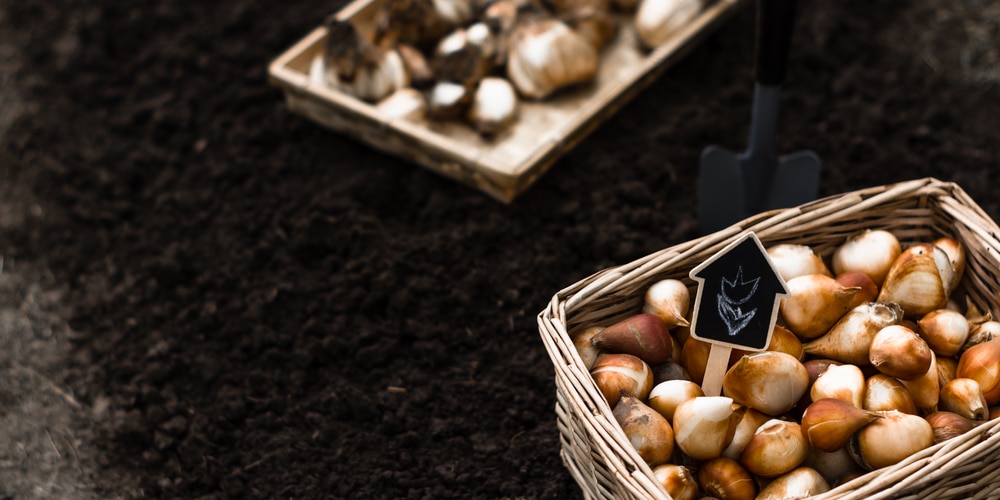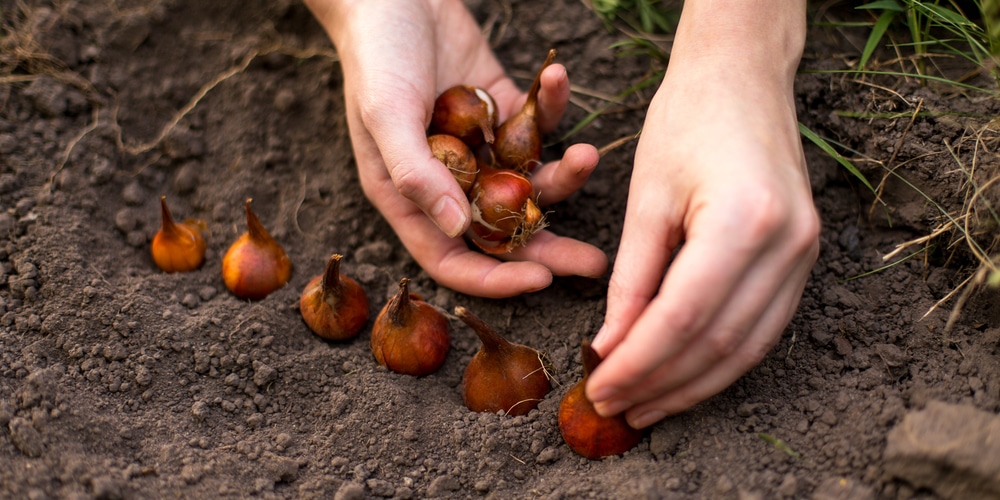In gardening, timing is everything, especially with regard to when to plant daffodil bulbs in Ohio. There’s general information you need to know when it comes to when and how, as well as plenty of specifics. When we’re done, you’ll know everything you need to get started and experience the wonder of seeing your first daffodils pop out of the ground in the spring. Let’s look at when to plant daffodil bulbs in Ohio!
The Basics
Daffodil bulbs can be accurately described as cold, hardy bulbs, which means the planting season in Ohio starts in the fall. October and November are considered the best months, but technically you can plant as late as January and still have success, and you can actually plant after the first frost or snowstorm and get good results.
A good rule of thumb is to plant approximately six weeks before the soil freezes, so keep that in mind if the summer-to-fall transition is uneven.
There are issues that come with planting too early or too late. Planting daffodil bulbs too early makes them susceptible to rot, and if you put them in during the late summer weeks they can actually be tricked into trying to bloom too early.
If you do end up planting daffodil bulbs in the late winter, the advantage is an equally late bloom. That means you can enjoy the pleasure of seeing your daffodils bloom when most of the other early bloomers have come and gone. While they’re flowering, yours will still be developing roots, and the only tangible disadvantage associated with a late bloom is that your bloom may be smaller.
Planting Specifics
The first question many would-be gardeners ask when it comes to daffodils is how many to plant. The general rule is to plant in double figures, i.e., ten or more, with three in the middle and the other seven surrounding them in a loose circle.
If you have more space and you’re so inclined, you can go for a larger group, but it’s generally not considered a idea to mix in other cultivars in with a planting group, so keep that in mind as you lay out your garden.
Daffodils tend to look better in formal groups, but if you want to get fancy you experiment with different design patterns when you plant your bulbs.
The bulbs should be planted with the pointed end up, which of course means that fat end will be down. To get the digging right, measure the length of the bulb from the pointed end to the tail, then dig twice that distance when you go to plant.
For a better idea of how this works, let’s spell out a specific example. If your bulb measures out a 2 inches from top to bottom, you’ll want to dig down four inches below the soil level.
Why go that deep? A deeper planting helps protect the bulbs from issues like frost heaves, and it can also protect them from damage from different gardening tools like spades and rakes. You don’t have to measure the hole down to the last millimeter, but going deep will increase your chances of success by a lot.
Soil issues play a role in this, too. If you’ve got sandy soil, plant the bulbs more deeply. For heavier soils—e.g., clay—you may want to consider a shallower plant. Part of this depends on your knowledge of your property and the soil, so be your own expert.
When you’re done planting, cover the bulbs with soil, then water them well—there’s no need to soak them before you plant. You can also use mulch to protect them if they’re in a vulnerable area or section of your garden, and chopped leaves will fit the bill if you’d prefer not to mulch.
When to Plant Daffodil Bulbs in Ohio: Conclusion
One of the best things about planting daffodil bulbs is that they’re easy to grow, so your chances of long-term success are good as well.
If you’ve got good soil drainage and your garden is getting the right amount of sun, you can leave the bulbs in the ground, and they’ll likely bloom year after year.
Even better, daffodils have been known to multiply over the years, so you may even get more than you bargained for. And when it comes to the pleasures of seeing them emerge each spring, what could be better than that?


